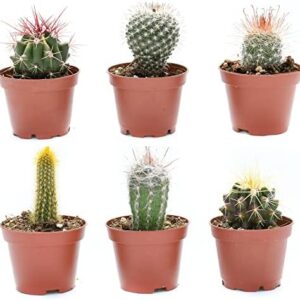If you’ve always admired houses with beautiful indoor plants but have been too intimidated to try your hand at caring for them, fear not! Indoor plant care doesn’t have to be complicated or overwhelming. With a little bit of knowledge and some basic tips, you can easily become a green thumb success.
First things first, choose your plants wisely. Not all indoor plants are created equal, and some are much easier to care for than others. If you’re just starting out, consider low-maintenance plants like pothos, spider plants, or snake plants. These varieties are resilient and forgiving, making them perfect for beginners.
Next, think about the placement of your plants. Different plants have different light requirements, so it’s essential to match them with the right spot in your home. For example, plants like succulents and cacti thrive in bright, direct sunlight, while ferns and peace lilies prefer indirect, filtered light. Take the time to observe the light levels in your home and place your plants accordingly.
Once you’ve chosen the perfect plants and found the ideal spot for them, it’s time to consider watering. The key to successful indoor plant care is finding the right balance of water – not too much, and not too little. Overwatering is a common mistake that can lead to root rot and other issues, so be sure to allow the soil to dry out between waterings. On the flip side, underwatering can also be harmful, so make sure to water your plants thoroughly when needed.
In addition to water, plants also need nutrients to thrive. Fertilizing your plants is an essential part of indoor plant care, as it provides them with the essential nutrients they need to grow and stay healthy. There are many different types of fertilizers available, so do some research to find the best option for your specific plants.
Another crucial aspect of indoor plant care is maintaining proper humidity levels. Most indoor plants prefer a humid environment, similar to what they would experience in their natural habitat. If your home is particularly dry, consider investing in a humidifier or placing a tray of water near your plants to increase moisture levels.
Regular grooming and pruning are also important for indoor plant care. Remove any dead or yellowing leaves, as well as any debris that may have accumulated in the soil. Pruning your plants can promote healthy growth and prevent overcrowding, so be sure to trim them back as needed.
Lastly, keep an eye out for pests and diseases. Indoor plants are susceptible to a variety of pests, including mealybugs, spider mites, and scale insects. If you notice any signs of infestation, such as yellowing leaves or sticky residue, take action immediately to prevent the problem from spreading. There are many natural remedies and commercial products available to help control pests and diseases, so do some research to find the best solution for your plants.
With a little bit of knowledge and some consistent care, you can easily become a master of indoor plant care. Remember to choose the right plants for your home, provide them with the proper light, water, and nutrients, and keep an eye out for any pests or diseases. By following these simple tips, you’ll be well on your way to green thumb success in no time. So go ahead, bring some greenery into your home and enjoy the many benefits of indoor plants!






